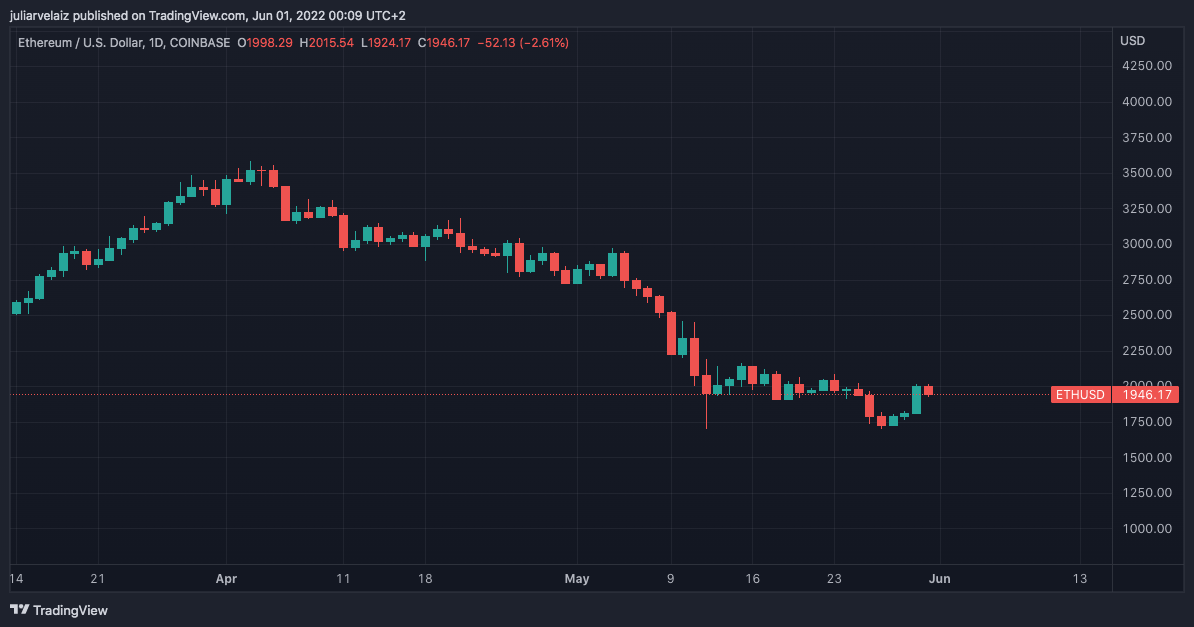It was a highly anticipated launch when the Ethereum layer-2 scale solution Optimism airdropped the governance token OP.
Why So Optimistic?
In a mission to fund public goods and create a sustainable future for Ethereum, the Optimism Collective firmly believes that “positive impact to the collective should be rewarded with profit to the individual,” thus this latest airdrop is one more step in their process of creating “a new model for properly rewarding those who create or sustain public goods.”
“The Optimism Collective will dispel the myth that public goods cannot be profitable. The Collective will provide retroactive incentives to public goods that are beneficial for Optimism or Ethereum and all members of the Collective. These public goods act as a propellant for the growth of the Collective economy.”
Their quest to “rebuild the internet to align with the values of its users” has excited many users, even Vitalik Buterin himself who previously described the effort as “Possibly the biggest attempt at non-token-holder-centric DAO governance so far.”
The team explained that ever since they opened up the system, the network has seen “more than 50 apps deployed on Optimism, resulting in over 60k ETH bridged in and more than $900M in total on-chain value.”
Optimism and Ethereum users are enthusiastic about the potential for this project, which will continue to improve user experience and lower transaction fees. They are even more excited about the governance and rewards that will result from supporting this experiment and working with it.
As the collective’s vision explains, Optimism is “governed by a collaboration between the Optimism Foundation and the members of the Optimism Collective.” Likewise, the Collective has established its core governing structure divided into two equal chambers in order to enable a collaborative ecosystem:
- The Token House and the Citizens’ House: to launch later in the year, it is meant to “facilitate and govern a process to distribute retroactive public goods funding, generated from the revenue collected by the network.”
- The Token House: established today by the OP token airdrop, meant to create “an ongoing system of incentives for projects and users in the Optimism ecosystem.”
Similar Reading| TA: Ethereum Dips From $2K, Why 100 SMA Might Spark Fresh Increase
Start of the Ethereum Season Of Airdrops
What the Collective had described as “an entire season of airdrops” with over 250,000 eligible addresses, began today with the first OP airdrop that allocated 5% of the initial OP supply.
“Token holders will be able to vote on protocol upgrades, project incentives as a part of a Governance Fund, and more.”
It was a rough first airdrop for OP. It was a bumpy first airdrop for OP. The team acknowledged that they had underestimated the expected load on their RPC. tweeted.
As the collective has been careful to constantly alert users about possible scams by impersonators and to only follow official announcements, it was strange at first that the claims of the OP token seemed to have started without the team giving out said announcement –a Twitter account dedicated to sharing airdrops announced it beforehand–, but this was later explained alongside other mistakes.
Problem seems to be that MerkleDistributor failed to cancel their contract with them. This meant that “claims were open, and we had no way to stop them.”
“We then deployed our claims UI in preparation for our official announcement,” they explained, and while underestimating the amount of traffic that would hit them, “website visitors found the claims link” before the announcement was officially made, thus “the public RPC started getting slammed.”
“We have NOT officially announced yet, but we’re already experiencing an all-time high demand,” the team had alerted earlier in the day, surprised by the high load that struck.
The team continued in a series of efforts that resulted in taking down the claims UI for a period of time “in an effort to decrease RPC load in the short-term,” however, “without access to the claims UI, users began to construct and share links to their own custom-built claim UIs.”
It took them several hours to “stabilize the public RPC.”
“While the sequencer remained stable throughout, this was the point where read-access was able to handle the expected load.”
Throughout the process, users experienced various issues like not being able to claim OP at the same time as other early users or seeing their status as “ineligible”, although they had previously checked the opposite.
It became apparent that Binance also had problems with the OP hype. Users claimed that Binance wasn’t showing deposits even though they transferred successfully.
However, it seems that the team has responsibly solved the current problems and will apply what they have learned to their next flight.
Meanwhile, many holders expect the OP price to experience a rally as it’s being listed by big exchanges like Binance and FTX. The token currently trades at approximately $1.69After reaching an all-time high of $2.10 CoinGecko reported that the coin had dropped to $1.10.
Similar Reading| TA: Ethereum Dips From $2K, Why 100 SMA Might Spark Fresh Increase
